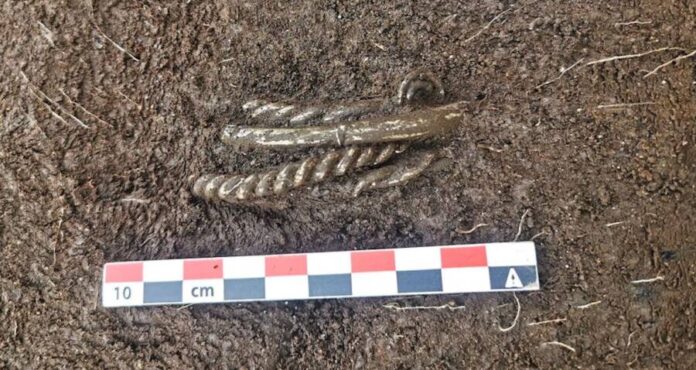Archaeologists have recently made a remarkable discovery that sheds new light on the Viking era—an invaluable treasure buried over 1,000 years ago by the Vikings themselves. The treasure was uncovered in Årdal, Hjelmeland, located in Western Norway, during an excavation led by the University of Stavanger’s Museum of Archaeology. The discovery, announced in a press release on Wednesday, has stunned the archaeological community with its rarity and historical significance.
The excavation took place on a farm where a local farmer had planned to build a road. What initially seemed like a routine dig soon turned into an extraordinary find when field archaeologist Ola Tengesdal Lygre realized the significance of what lay just 7 inches beneath the soil. “At first, I thought we had found some twisted copper wires, as is common in agricultural soil,” Lygre said. “But when I saw several pieces lying next to each other, and they were made of silver, not copper, I knew we had stumbled upon something exciting.”
The treasure trove includes not just silver artifacts but also soapstone pots, rivets, knife blades, and more, pointing to a Viking farm that once thrived on the land. Experts believe the findings are proof of a “large and powerful” Viking settlement. What makes this discovery particularly significant is that the artifacts were found exactly where they had been buried, undisturbed for centuries. This is a rare occurrence in archaeology, as most valuable objects are usually discovered on fields that have been plowed, losing their original context in the process. “This is a unique finding,” said project manager Volker Demuth. “Since the silver treasure hasn’t been moved, it can provide us with completely new insights into life and society during the Viking era.”
Demuth, who has been involved in countless excavations, called this discovery the “biggest” of his career. He speculated that the people who lived on the farm may have hidden their valuables in haste, possibly fleeing an attack. “If people had to flee, it would make sense to hide their treasures in a place where others wouldn’t think to look,” he said, adding that the relics could offer a wealth of information about Viking social structures, trade, and daily life.
Archaeologists uncover 1,000-year-old Viking treasure in Norway https://t.co/evTFuVZcb4 pic.twitter.com/3e0Aqpyv2C
— New York Post (@nypost) September 18, 2024
The treasure, now safely in the hands of researchers, will undergo further analysis, including soil samples and x-rays to learn more about its composition and origins. Once the research is complete, the artifacts will be put on display for the public to see. Museum director Ole Madsen hailed the find as “an absolutely fantastic discovery” that will contribute to a deeper understanding of one of Norway’s most important historical periods. “The Viking era is central to our national history, and this discovery gives us a unique window into that time,” Madsen said.


